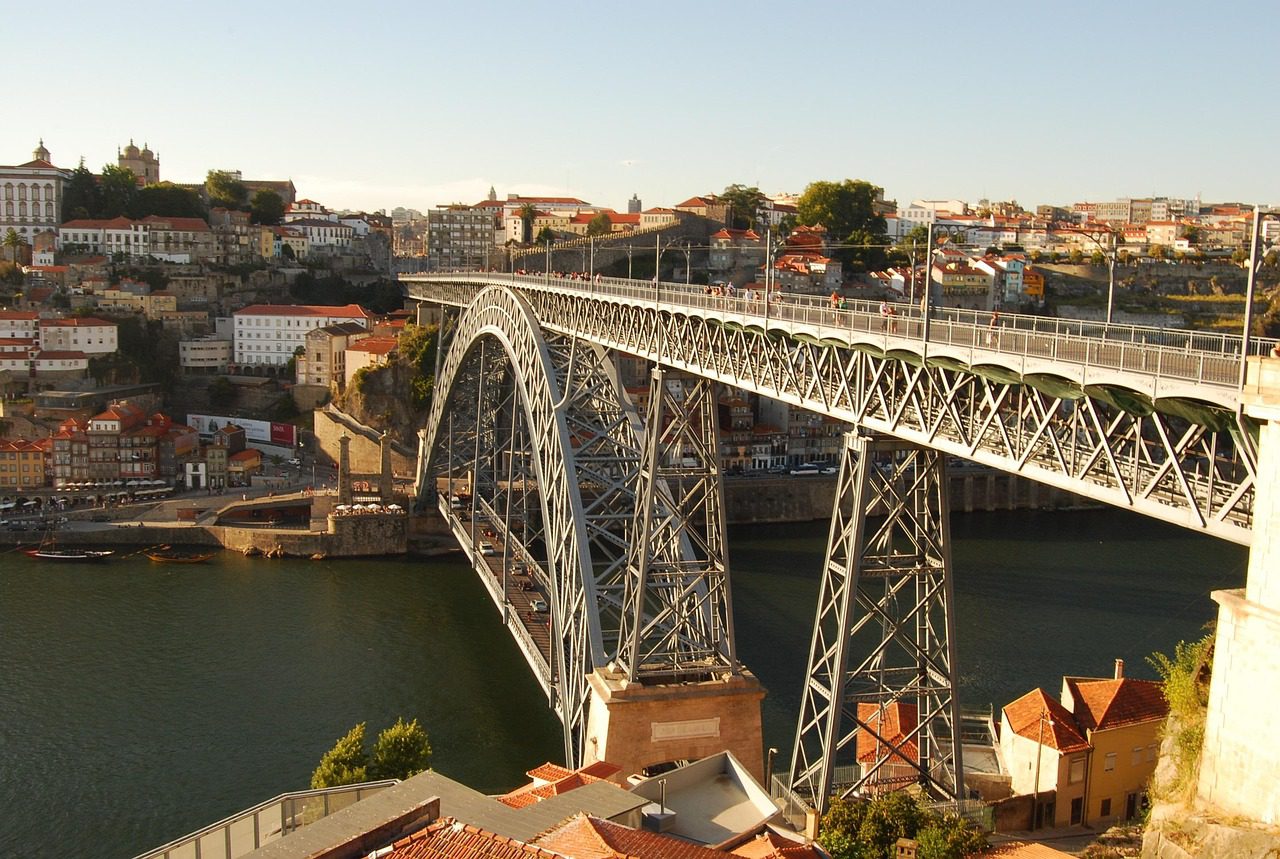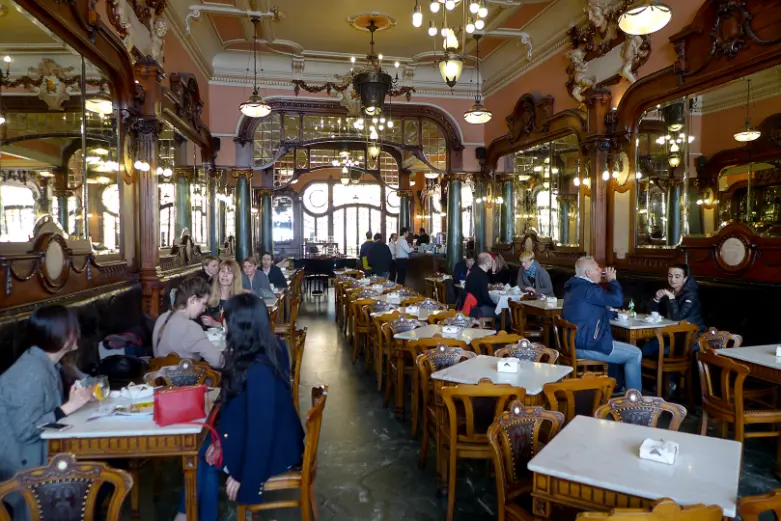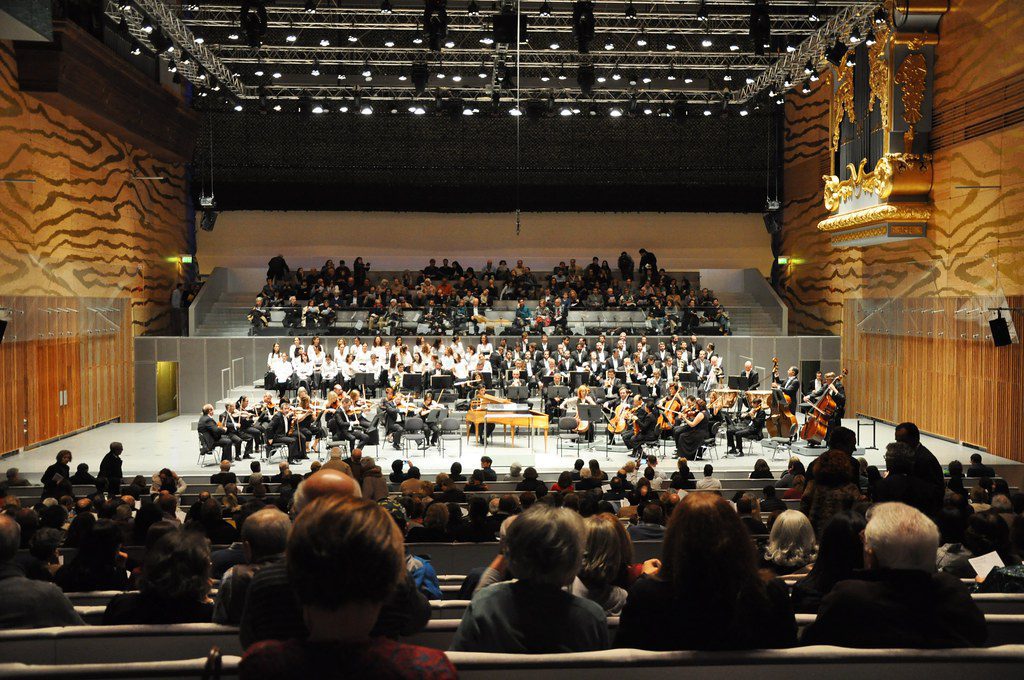Porto vs Lisbon 2025: Portugal City Guide – Is Porto Worth Visiting?

Just as you plan your Portugal City Guide, weigh Lisbon vs Porto by noting that Porto’s affordability, safety, and walkable scale are driving its 2025 rise; Is Porto Worth Visiting? Yes—it’s UNESCO-listed centre, booming cultural scene, and lower costs offer authentic experiences while Lisbon faces overtourism and higher prices. You’ll find efficient transport, thriving local crafts, and a growing digital-nomad community that make Porto an authoritative alternative for your next trip.
Key Takeaways:
- Is Porto Worth Visiting: Yes — 73% of travel experts prefer Porto; 2024 saw €492M in accommodation revenue and 6.2M overnight stays, marking a major growth year.
- Lisbon vs Porto: Porto eases overtourism pressures with lower costs (rent ~33.2% cheaper) and fewer crowds while keeping strong cultural offerings.
- Portugal City Guide: Porto placed 8th on Time Out’s 2025 World’s 50 Best Cities and is celebrated as one of the most beautiful cities, with a UNESCO-listed, living historic centre.
- Compact and walkable: Most sights are 15–20 minutes apart and downtown spans ~2.2 km, enabling genuine exploration on foot despite hilly terrain.
- Authentic culture and cuisine: Active traditional crafts, markets like Bolhão, and iconic dishes (Francesinha, Tripas à Moda do Porto) offer real local experiences, not staged tourism.
- Digital nomad and safety advantages: Top global rank for digital nomads in 2025, fast, affordable internet (100 Mbps–1 Gbps €30–€50), monthly budgets €2,000–€2,700, and high perceptions of safety.
- Sustainable growth and connectivity: Shortlisted for European Capital of Smart Tourism 2025, carbon‑neutral goals, airport links to 104 destinations, and easy access to the Douro Valley.
Porto vs Lisbon: The Ultimate Showdown for City Break Enthusiasts
If you prioritize compact exploration, authenticity, and value, Porto—preferred by 73% of travel experts is hard to beat; you get UNESCO streets, lively markets, and easier crowds compared with Lisbon’s tourist pressure and higher prices.
For a short break, you’ll cover major sights on foot, save on meals and rent, and still enjoy world-class culture and cavaier viewpoints.
Highlighting the Key Distinctions Between Portugal’s Dynamic Duos
Porto posted €492 million accommodation revenue in 2024 (+12.8%) and >6.2 million overnight stays, with 15M airport passengers, while Lisbon handled 8.52M visitors and shows signs of overtourism and crowded transport.
Expect rent to be 33.2% higher in Lisbon and typical meal costs of €10 in Porto vs €14 in Lisbon; your daily budget and tolerance for crowds will decide the winner.
Evaluating the Overall City Break Experience: Which City Reigns Supreme?
Porto’s walkable core (most sights 15–20 minutes apart), UNESCO historic centre, living crafts (filigree, black pottery), and food like Francesinha create a dense, authentic break; Lisbon wins for broader international connections and larger-scale attractions, but you trade that for more crowds, higher costs, and longer transfers.

For a 48-hour itinerary, you can see Ribeira, Livraria Lello, Clérigos, and a Douro wine half-day while keeping expenses low—meals ~€10, fiber internet from 100 Mbps to 1 Gbps for €30–€50/month if you stay longer.
If your priority is intimacy, safety (87% of women feel safe), and cost-efficiency, you’ll likely favor Porto; choose Lisbon if cosmopolitan scale and direct long-haul links matter more to your plans.
The Budget Factor: Is Porto the Wallet-Friendly Choice?
Accommodation Costs: A Comparative Analysis of Porto and Lisbon
You’ll notice real savings on housing: rent in Lisbon is 33.2% higher, and to match Porto’s lifestyle, you’d need about €4,000 in Porto vs €4,699.60 in Lisbon.
For remote workers, expect monthly ranges of €2,000–€2,700 in Porto versus €2,500–€3,400+ in Lisbon, so your lodging choices directly shape how much you keep for experiences.
Accommodation comparison
| Porto | Lisbon |
|---|---|
| Typical all-in budget: €4,000 | Typical all-in budget: €4,699.60 |
| Digital nomad range: €2,000–€2,700 | Digital nomad range: €2,500–€3,400+ |
| Inexpensive meal: €10 | Inexpensive meal: €14 |
| Rent: baseline | Rent: +33.2% vs Porto |
Culinary Expenses: Feasting in Porto vs. Dining in Lisbon
Dining in Porto stretches your euros further: restaurant prices are ~18.7% lower than in Lisbon, and many hearty local meals cost around €10 versus €14 in the capital, letting you sample Francesinha, petiscos, and market produce more often without breaking the bank.

You can eat very well on a modest budget by blending market meals and local tascas: Bolhão Market offers fresh produce and snacks where vendors become your informal guides, and neighbourhood tascas serve full plates for under €12.
Splurging on a riverside meal or a tasting menu will narrow the gap with Lisbon, but routine dining in Porto reliably costs less, so you’ll have more budget left for wine tastings in the Douro or private food tours.
Exploring Affordably: Public Transport and City Exploration Costs
Porto’s compact layout means you can skip transport for many days: most attractions lie within 15–20 minutes on foot and the downtown spans just 2.2 km, cutting sightseeing costs and taxi reliance while letting you enjoy spontaneous discoveries without a fare.
When you do use transit, Porto’s metro and regional network is efficient and connects to Francisco Sá Carneiro Airport, which handled over 15 million passengers recently, keeping transfers straightforward.
Buy a reloadable Andante card for multi-day travel to reduce per-ride costs, combine walking with short metro hops to reach hilltop viewpoints, and use occasional suburban trains to visit the Douro—this mix usually costs less than daily taxis in Lisbon’s congested center and helps you stretch your daily budget.
Timing Your Adventure: Ideal Seasons for Visiting Porto and Lisbon
Discovering the Optimal Periods for a Memorable Porto Experience
Plan Porto visits for April–June or September–October when temperatures hover around 16–24°C, daylight is long, and crowds ease despite the city recording 6.2 million overnight stays in 2024.
You can catch the lively São João festivities (June 23) without peak‑summer prices, explore the UNESCO Historic Centre on foot, and still find accommodations cheaper than July–August peak rates—perfect if you value walkability and authentic neighborhood life.
Timing Your Lisbon Visit: Benefits of the Shoulder Season
Choose March–May or September–October to dodge the bulk of Lisbon’s summer crowds (the city hosted 8.52 million visitors in 2024), enjoy milder 18–25°C days, and secure better rates on flights and hotels while museums, trams, and viewpoints are far less congested than in July–August.

Shoulder months also reduce the strain of Lisbon’s higher living costs—you’ll notice shorter waits at top restaurants and easier metro trips compared with high season; avoid early November if you want cheaper rates, since events like Web Summit can spike prices and availability.
Climate Showdown: Assessing Year-Round Weather Conditions
Atlantic influence keeps Porto cooler and wetter: summers average about 20–25°C and winters 8–14°C, while Lisbon trends warmer and drier with summer highs often 25–30°C and similar winter lows.
Expect wetter winters in Porto that can disrupt outdoor plans and strong summer heatwaves in Lisbon that make mid‑day sightseeing uncomfortable.
Pack for layers: a waterproof jacket and sturdy shoes for Porto’s rainy spells, and breathable clothing plus sun protection for Lisbon’s hot, sunny months; if swimming, note the northern Atlantic near Porto stays noticeably cooler than Lisbon’s coast, affecting beach comfort.
Nightlife Narratives: Where to Find the Beat of the Night
You can chase late-night live music in Porto’s intimate streets or look into Lisbon’s club epicenters; with Porto named a top pick by 73% of travel experts, expect compact, sociable nights around Ribeira and Galerias de Paris, while Lisbon draws bigger, more international club nights that stretch until dawn.

Note that Porto scores higher on safety (87% of women report feeling safe), making late evenings feel more relaxed for solo explorers.
Comparing Nightlife Scenes: Porto’s Vibes vs. Lisbon’s Energy
Porto gives you a neighborhood-by-neighborhood rhythm: craft beer bars, live fado pop-ups, and concerts at Casa da Música within walking distance, producing a friendly, discoverable scene.
Lisbon pushes a wider, more intense energy across Bairro Alto, Cais do Sodré, and Lux Frágil, with larger venues and international DJs, but more crowded tourist hotspots that raise the risk of pickpockets on busy nights.
Nightlife at a glance: Porto vs Lisbon
| Porto | Lisbon |
|---|---|
| Core neighborhoods: Ribeira, Galerias de Paris, Cedofeita | Core neighborhoods: Bairro Alto, Cais do Sodré, Santos |
| Typical hours: 20:00–03:00 (clubs later) | Typical hours: 22:00–05:00+ (clubs all night) |
| Signature venues: Casa da Música, Maus Hábitos, Plano B | Signature venues: Lux Frágil, Musicbox, Pensão Amor |
| Average drink price: €2–€3 | Average drink price: €3–€5 |
| Vibe: Intimate, authentic, walkable | Vibe: Expansive, international, high-energy |
Entertainment Choices: Variety and Quality Across Both Cities
You’ll find Porto concentrating high-quality choices within a smaller area—concerts at Casa da Música, contemporary programs at Serralves, and authentic local music nights—while Lisbon offers a broader mix from fado houses in Alfama to major electronic festivals and large-scale performances; Porto gives you depth in a compact footprint, Lisbon gives you scale and international programming.

Digging deeper, you can attend up to a dozen weekly live-music nights in Porto that blend jazz, indie, and traditional Portuguese sounds—Serralves and Casa da Música host seasonal series drawing international acts—whereas Lisbon schedules major touring artists and festivals (NOS Alive, Super Bock Super Rock) that attract tens of thousands.
Ticket prices often reflect scale: smaller Porto gigs commonly cost €10–€25, while Lisbon arena shows run €30–€80.
For specialized interests—vinho tasting events, vinyl nights, experimental electronic sets—Porto’s curated local offerings let you connect with artists and venue owners directly, while Lisbon’s larger market provides more high-profile, celebrity-driven programming.
Beyond the City Limits: Day Trips to Enrich Your Portuguese Journey
You can turn Porto or Lisbon into launchpads for unforgettable day trips: from Porto, the Douro Valley lies roughly 1–2 hours inland for wine estates and river cruises; from Lisbon, Sintra, Cascais, Évora, and Óbidos sit within 40–90 minutes, offering palaces, beaches, and medieval streets.
Choose trains for stress-free travel, rent a car for hidden spots, and plan mornings to avoid peak crowds and get the most from each destination.
Must-See Destinations from Porto: The Allure of the Douro Valley
About 1–2 hours by car or 2–3 hours by regional train from Porto, the Douro Valley—UNESCO World Heritage since 2001—delivers terraced vineyards, family-run quintas, and tasting experiences often priced €15–€35.

You can take half-day river cruises from Peso da Régua or full-day drives to Pinhão, visit historic cellars, and witness dramatic slopes where port and table wines are still made using centuries-old methods.
Exploring the Surroundings: Noteworthy Day Trips from Lisbon to Consider
Sintra (≈40 min by train) offers the Pena Palace and Quinta da Regaleira but faces heavy crowds at midday; Cascais (≈30–40 min) combines beaches and Boca do Inferno; Évora (≈1.5 hours) showcases Roman ruins and a UNESCO center; Óbidos (~1 hour) is perfect for medieval walls; Arrábida (≈40 min) serves secluded beaches and hikes—each trip suits different interests and seasons.
Start early for Sintra to beat lines, buy train tickets in advance, and pair Cascais with Cabo da Roca for dramatic cliffs. In Évora, prioritize the Roman Temple and the Chapel of Bones; in Óbidos, sample local ginjinha from a cup.
For Arrábida, bring reef shoes and swim with caution where currents are strong; boat tours reveal grottoes and quieter coves not reachable from shore.
The Heart of the Matter: Why Porto is Capturing Traveler Affections
What Unique Charms Make Porto a 2025 Must-Visit?
With 73% of travel experts now favoring Porto, you’ll feel the shift: accommodation revenues reached €492 million in 2024, and the city logged over 6.2 million overnight stays.
You can walk most highlights in 15–20 minutes, savor authentic dishes like the Francesinha, explore Livraria Lello, and stretch your budget—roughly €4,000 in Porto versus €4,699.60 in Lisbon for the same standard of living.
The Distinctive Atmosphere of Porto Compared to Lisbon’s Pulse
You’ll quickly notice Porto’s intimate rhythm against Lisbon’s busier tempo: Lisbon hosted 8.52 million visitors in 2024, producing crowded public transport and tourist-heavy neighborhoods, while Porto’s compact core spans just 2.2 km (about a 33-minute north–south walk), keeping streets lived-in and neighborhoods quieter.
Time Out placed Porto 8th globally, and 78% of residents call it beautiful, which feeds a calmer, more authentic visitor experience.
Atmosphere Snapshot: Porto vs Lisbon
| Feature | Porto vs Lisbon |
|---|---|
| Scale & walkability | Porto: compact downtown, most sights 15–20 min apart; Lisbon: larger, more transit-dependent |
| Tourist pressure | Porto: 6.2M overnight stays with managed flows; Lisbon: 8.52M visitors, overtourism hotspots |
| Cost of living | Porto: ~€4,000 for comparable lifestyle; Lisbon: ~€4,699.60 (rent ~33.2% higher) |
| Cultural authenticity | Porto: living UNESCO centre, traditional crafts and markets; Lisbon: cosmopolitan capital with broader international scene |
| Safety & digital nomads | Porto: ranked 4th globally for nomads, 87% of women feel safe; Lisbon: larger nomad base (~16,000) but busier |
| Connectivity | Porto: airport handled 15M+ passengers and connects to 104 destinations; Lisbon: more hubs but heavier flows |
Stroll the Ribeira and you’ll see why Porto feels lived-in: riverside cafés, Bolhão Market vendors who double as local guides, and viewpoints over the Douro create everyday intimacy.
Nightlife favors cozy bars over sprawling club districts, day trips to the Douro Valley take only hours, and initiatives toward carbon neutrality by 2030 plus smart-tourism programs keep tourist growth more balanced—all shaping the calmer, community-forward vibe you experience here.
Summing up
Hence you can conclude from this Portugal City Guide that Is Porto Worth Visiting is a confident yes: Porto delivers authentic culture, walkable streets, lower costs, and smart tourism measures that make Lisbon vs Porto comparisons favor a more intimate, affordable experience; your itinerary will gain from Porto’s UNESCO heritage, strong connectivity, and vibrant local life, so prioritize Porto if you seek genuine Portuguese character without Lisbon’s crowds.
FAQ: Lisbon vs Porto – Why Portugal’s Second City is Winning Hearts in 2025
What are the main differences between Lisbon and Porto?
Porto is known for its smaller, more intimate atmosphere, while Lisbon is larger and more vibrant.
Both cities offer unique experiences, but Porto’s charm lies in its historic architecture and stunning views along the Douro River.
In contrast, Lisbon’s city center is bustling with activity and has a diverse range of attractions.
Is Porto cheaper than Lisbon for travelers?
Yes, Porto is generally considered cheaper than Lisbon.
Accommodation, dining, and activities in Porto often come at lower prices, making it an attractive option for budget travelers looking to explore Portugal without overspending.
When is the best time to visit Porto?
The best time to visit Porto is during the spring (April to June) or fall (September to October).
During these months, the weather is pleasant, and there are fewer tourists, allowing for a more enjoyable experience while exploring the city.
How does the food in Porto compare to Lisbon?
Food in Porto vs Lisbon offers distinct experiences. Porto is famous for its port wine and hearty dishes like Francesinha, while Lisbon is known for its seafood and pastéis de nata.
Each city has its culinary delights, making them both worth exploring for food lovers.
What are some popular day trips from Porto?
There are several fantastic day trips from Porto, including visits to the Douro Valley for wine tasting, historic cities like Guimarães and Braga, and beautiful coastal towns such as Aveiro.
These excursions allow travelers to explore different parts of Portugal while based in Porto.
Which city is better for a first-time visitor to Portugal?
Choosing between Lisbon and Porto for a first-time visit depends on personal preferences. Lisbon offers a larger variety of attractions and a lively atmosphere, while Porto provides a more relaxed vibe and stunning views.
Both cities have their unique charm, so it ultimately depends on what you seek in your trip to Portugal.
Can you easily travel between Lisbon and Porto?
Yes, traveling between Lisbon and Porto is quite easy, with frequent train services connecting the two cities.
The journey takes around 2.5 to 3 hours, making it convenient for travelers who wish to experience both cities during their trip to Portugal.
What is the city center like in Porto?
The city center in Porto is characterized by its historic buildings, narrow streets, and vibrant atmosphere.
Visitors can explore iconic landmarks such as the Ribeira District, Livraria Lello, and the Dom Luís I Bridge, all while enjoying the charming views of the Douro River.




